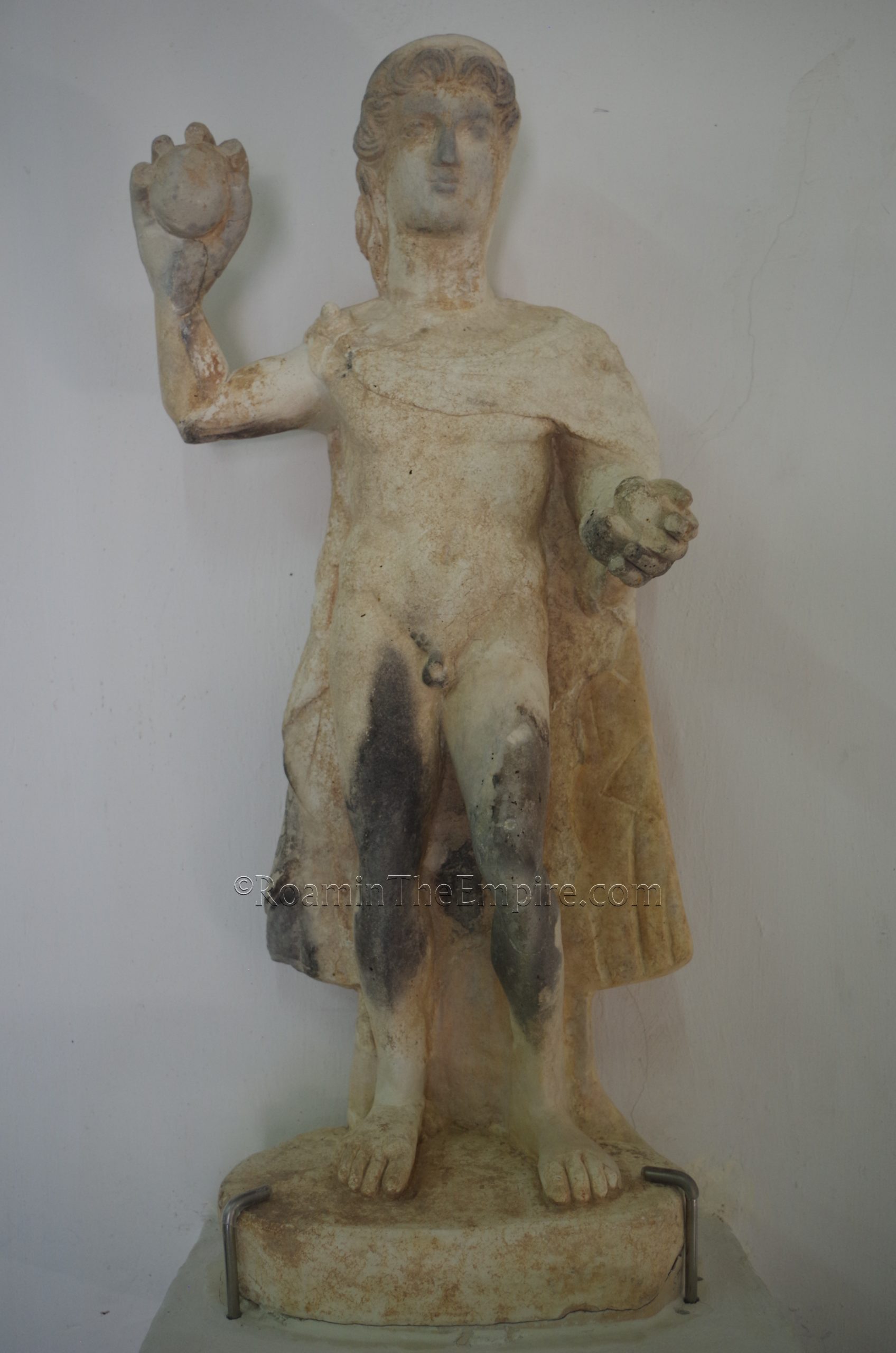
Most Recent Visit: July 2021
Though habitation in the immediate area of the Kouris River mouth dates back well into the neolithic period, settlement at the acropolis area of Curium (Kourion) seems to have begun around the 12th century BCE with the arrival of Mycenean settlers of an unspecified origin. Herodotus claims they are from Argos (and this is repeated by Strabo), though it has been posited that this may be an attempt by Herodotus to tie the treachery of Curium earlier in the Greco-Persian Wars with the mistrust of Argos’ allegiances with regard to later stages of the Persian conflicts. The presence of the worship of a god called Perseutas at Curium has been claimed to provide further evidence of a link between the two cities; with Perseutas seemingly being derived from the hero Perseus, who had origins at Argos. Worship of Hera and Apollo at Curium may also indicate ties to Argos. Some legendary origins of the city claim it was founded by Koureias, son of the mythological Cypriot king Kinyras, who then named the city after himself.
The earliest historical mention of the city seems to come from the 12th century BCE, when an inscription at Medinet Habu (Egypt) dating to the reign of Ramses III refers to Kir, which is believed to be Curium. Later, during Assyrian rule of Cyprus, in the 7th century BCE, a Damasu of Kuri is referenced on the Prism of Esarhaddon found at Nineveh, again believed to be Curium. From its founding until the 6th century BCE, Curium functioned as an independent kingdom. In 546 BCE, Curium, along with the rest of Cyprus, came under the control of the Persians. At the start of the Ionian Revolt in 499 BCE, Curium’s king, Stasanor, allied himself with the king of Salamis, Onesilos. At the battle of the Plain of Salamis in 498 BCE (not to be confused with the decisive naval battle in the Saronic Gulf 18 years later), however, Stasanor and his sizable army defected to the Persians, causing the Cypriot alliance to be crushed and the Persians to retain control of the island. It is this traitorous action in favor of the Persians that may have inspired Herodotus to liken the Cypriot city with Argos.
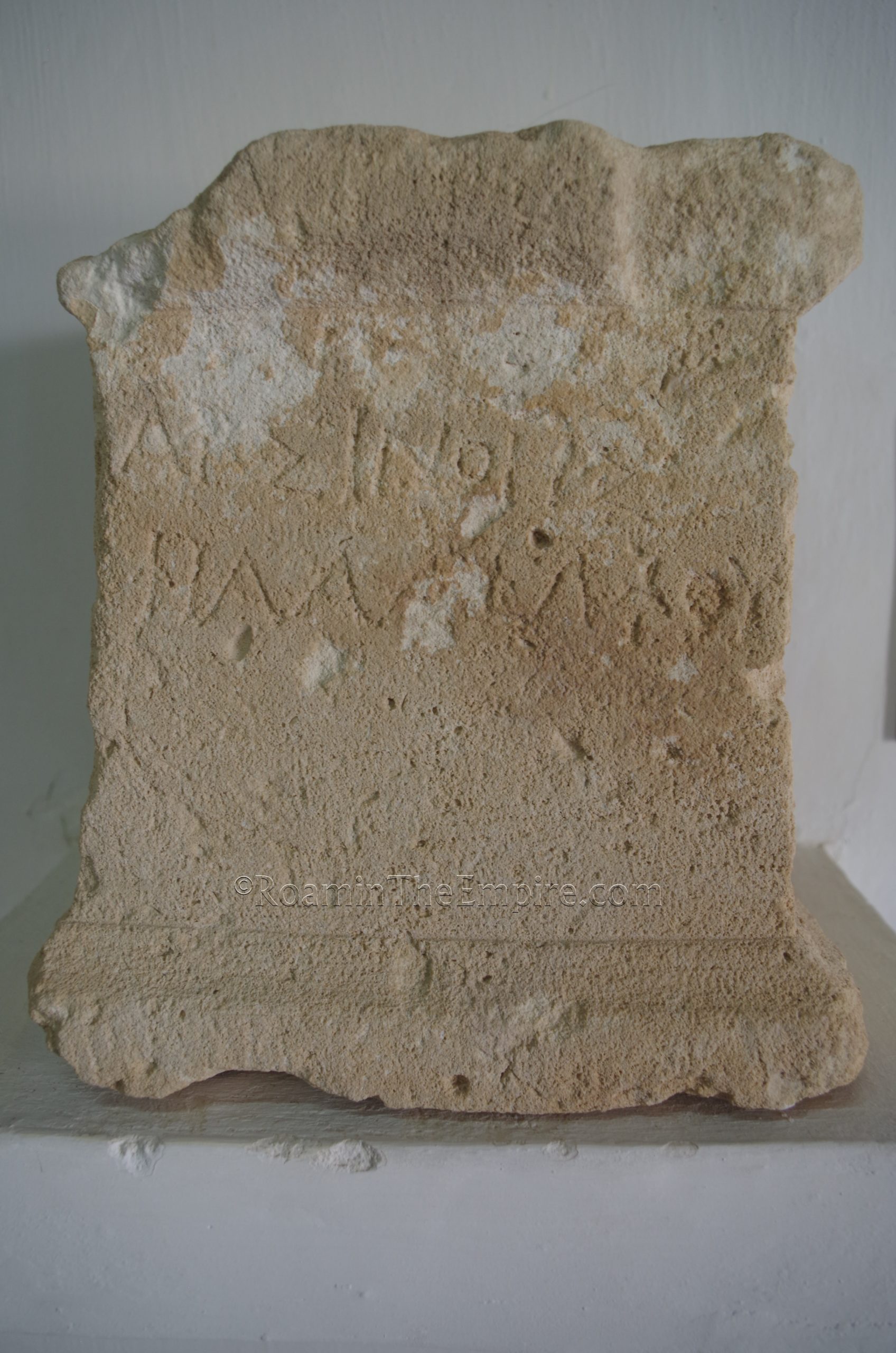
Curium came under the control of Alexander the Great in the later 4th century BCE, and it seems as though the kingdom was effectively dismantled at this time. Pasikrates, referred to as king by likely as a vassal of Alexander, is said to have joined a Cypriot fleet that supported Alexander at the siege of Tyre in 332 BCE. During the Wars of the Diadochi, Pasikrates was deposed and by the early 3rd century BCE, Curium, along with the rest of Cyprus, had come under Ptolemaic control. Curium doesn’t appear in the historical record for many centuries after this, though it came under control of the Romans, along with the rest of Cyprus in 58 BCE, and remaining so, aside from a brief period in which it was handed back to Ptolemaic rule from 47 to 31 BCE, until late antiquity. At first Cyprus was part of the province of Cilicia, but in 22 BCE was separated into its own province.
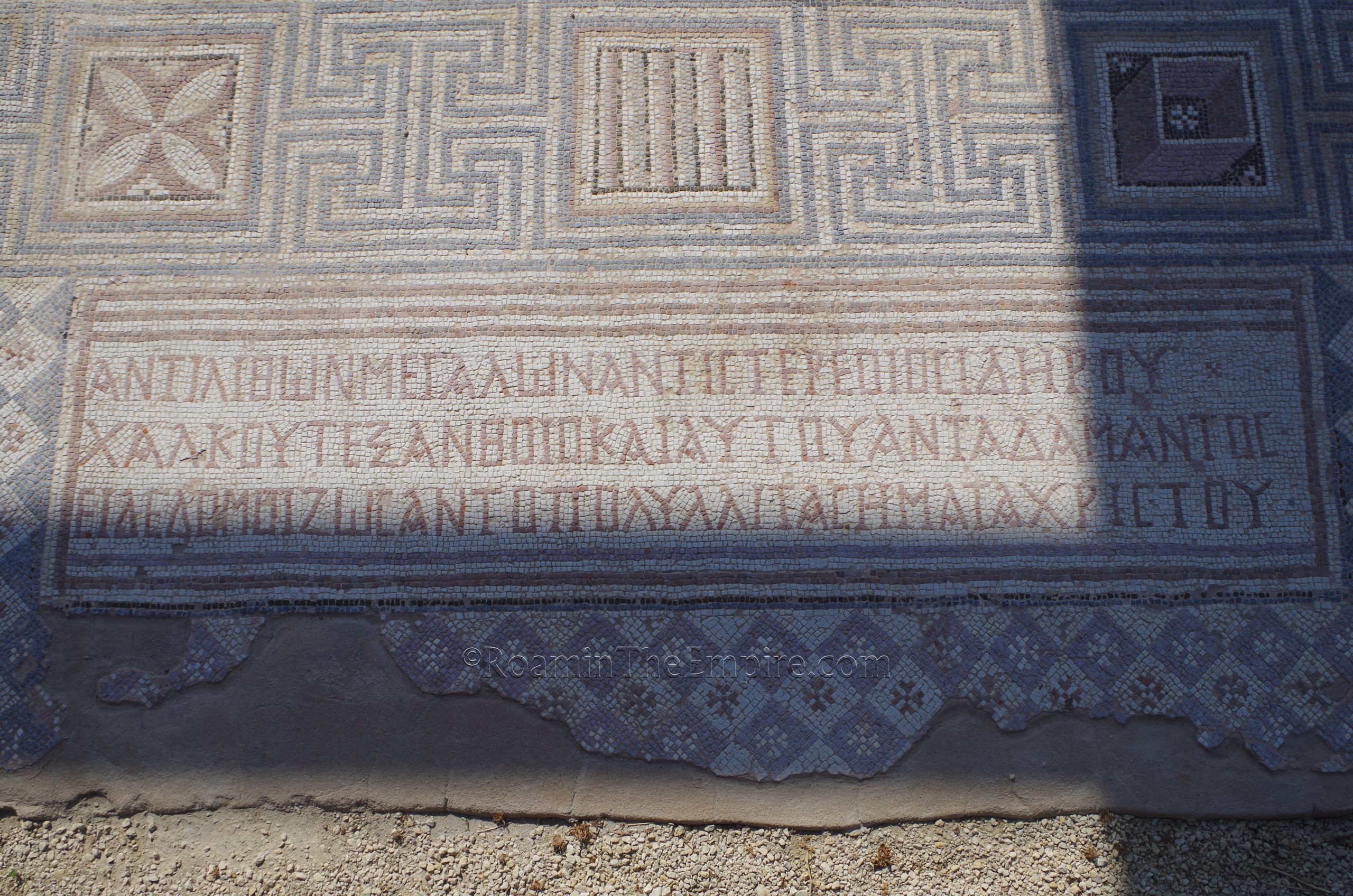
Despite only brief mentions in the historical record after the episode with Alexander, archaeological evidence suggests that Curium was doing well during this period. Strabo notes that it was one of the principal cities of the island and a starting point of voyages to Rhodos. Earthquakes plagued the island during Roman rule, and Curium was particularly devastated by a massive quake occurring in 365 CE. The city was largely abandoned for a period after that until Christian settlers arrived and began building among the ruins about 2 decades later. The settlement had a modest population until the 7th century CE, when Saracan raids and the moving of the local bishopric to nearby Episkopi facilitated the move of the population center to that location.
Getting There: The archaeological areas of Curium (but not the museum) are actually located within the Sovereign Base Area of Akrotiri (or Western Sovereign Base Area) which is a British Overseas Territory. That is, it is sovereign territory of the United Kingdom rather than the Republic of Cyprus. From a practical standpoint for a visitor, this doesn’t matter much, as there are no borders or customs. Public transportation can be little complicated for visitors, I’ve been told. There are ways to get from Nicosia to nearby Episkopi by bus several times a day, but most of them require at least two transfers, often in Limassol (https://www.cyprusbybus.com/). That being said, it’s much easier to get to Episkopi from Limassol. Then there is the matter of getting from Episkopi to the main archaeological site and the few areas of interest outside of that, for which there does not seem to be any regular transport. Private transport is likely the easiest way to get around, and there is pretty ample parking at all the relevant sites.
There are essentially four points of interest for ancient Curium; the archaeological museum in Episkopi, the main archaeological area, the stadium, and the sanctuary of Apollo Hylates. Though I started with the main site, a sensible place to start is also the Local Archaeological Museum of Kourion. The museum doesn’t really have an address, but it is located, appropriately, at the intersection of Mouseiou and Kouriou streets. It is open Monday through Friday from 8:00 to 15:30 and closed on Saturday and Sunday. Admission is free.
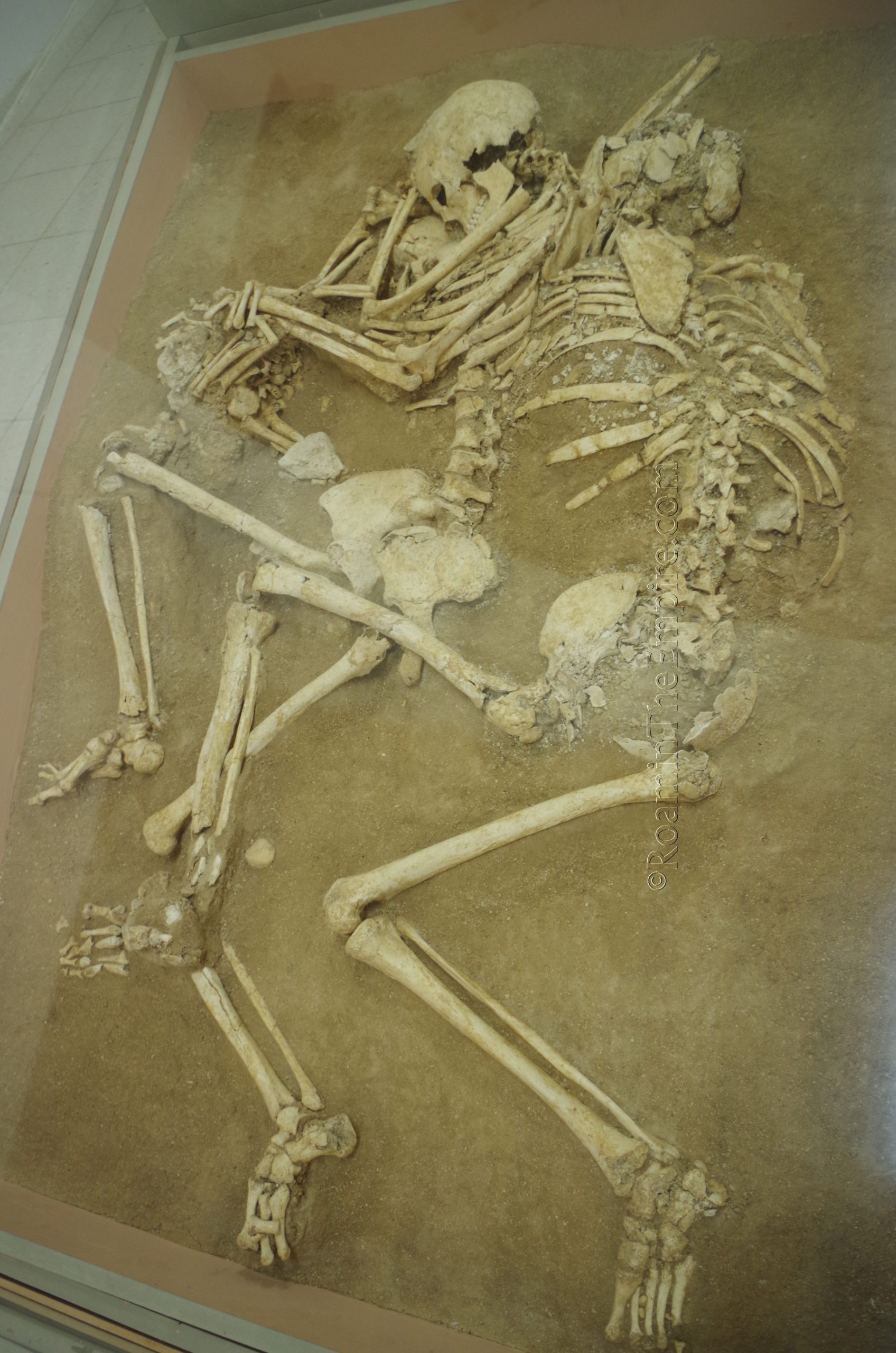
It’s not a very big museum, many of the more spectacular objects from Curium are in the Cyprus Museum in Nicosia. There are a number of objects spanning the history of the site, though, including earlier Cypriot artifacts. These are particularly interesting given that the vast majority of the visible excavations at Curium expose remains from the Roman and early Christian eras, so these objects are one of the ways to gain some glimpse into the earlier periods of occupation. There are a lot of smaller objects from the necropolis as well as a few larger statues and other objects.
Perhaps one of the most evocative displays are the three skeletons found huddled together in one of the houses, victims of the 365 CE earthquake. Found in the position they are displayed, a man seems to have attempted to shield his wife and their infant child from falling debris during the earthquake. Again, the museum is rather small; just two rooms. It took me about half an hour to go through the entire thing.
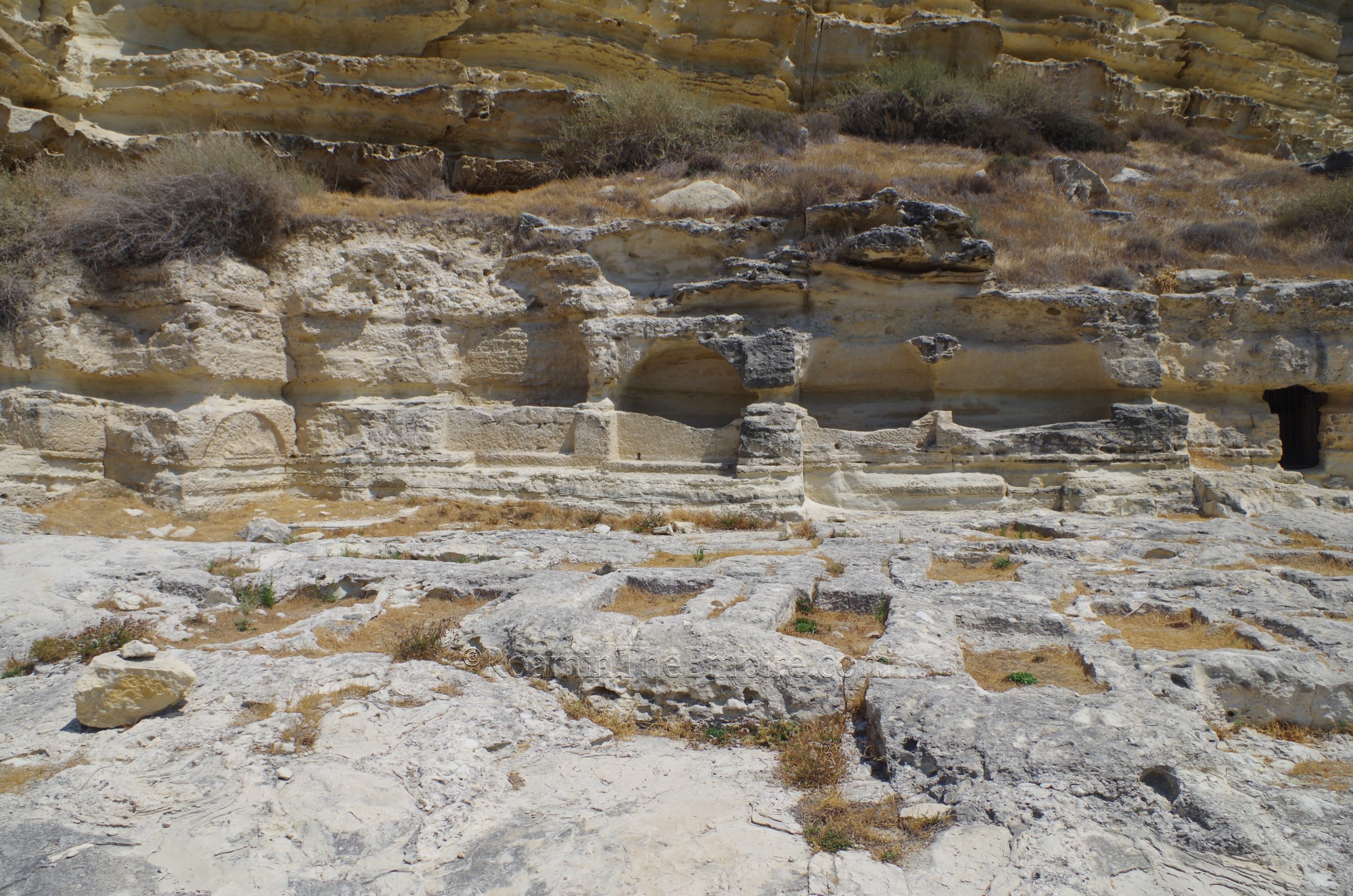
The main archaeological site of Kourion is located about 2 kilometers away from the archaeological museum; about a 5 minute drive. There’s no actual address, but there is a labeled turn off from the B6 highway running between Episkopi and the site. Before actually entering the site, about 200 meters before the entrance, are a number of rock cut arcosolia type tombs on the right (north) side of the road. These tombs date to the late Roman period. There is a shoulder to pull off on and get a closer look, there are no gates preventing access to these. Some are cut in the ground while others into the face of the rock. I found one that still had some interior decoration; a bust and some abstract decoration.
The entrance to the site is a drive up ticket booth. During the summer (April 16 through September 15) it is open Monday through Sunday from 8:15 to 19:30. The rest of the year the hours are 8:30 to 17:00. Admission is 4.50 Euro. One through, there is a parking area and visitors center after following the road up and back around to the east. Don’t make the mistake I did of taking an immediate turn toward the theater, as that is handicap parking for when there are events put on at the theater.
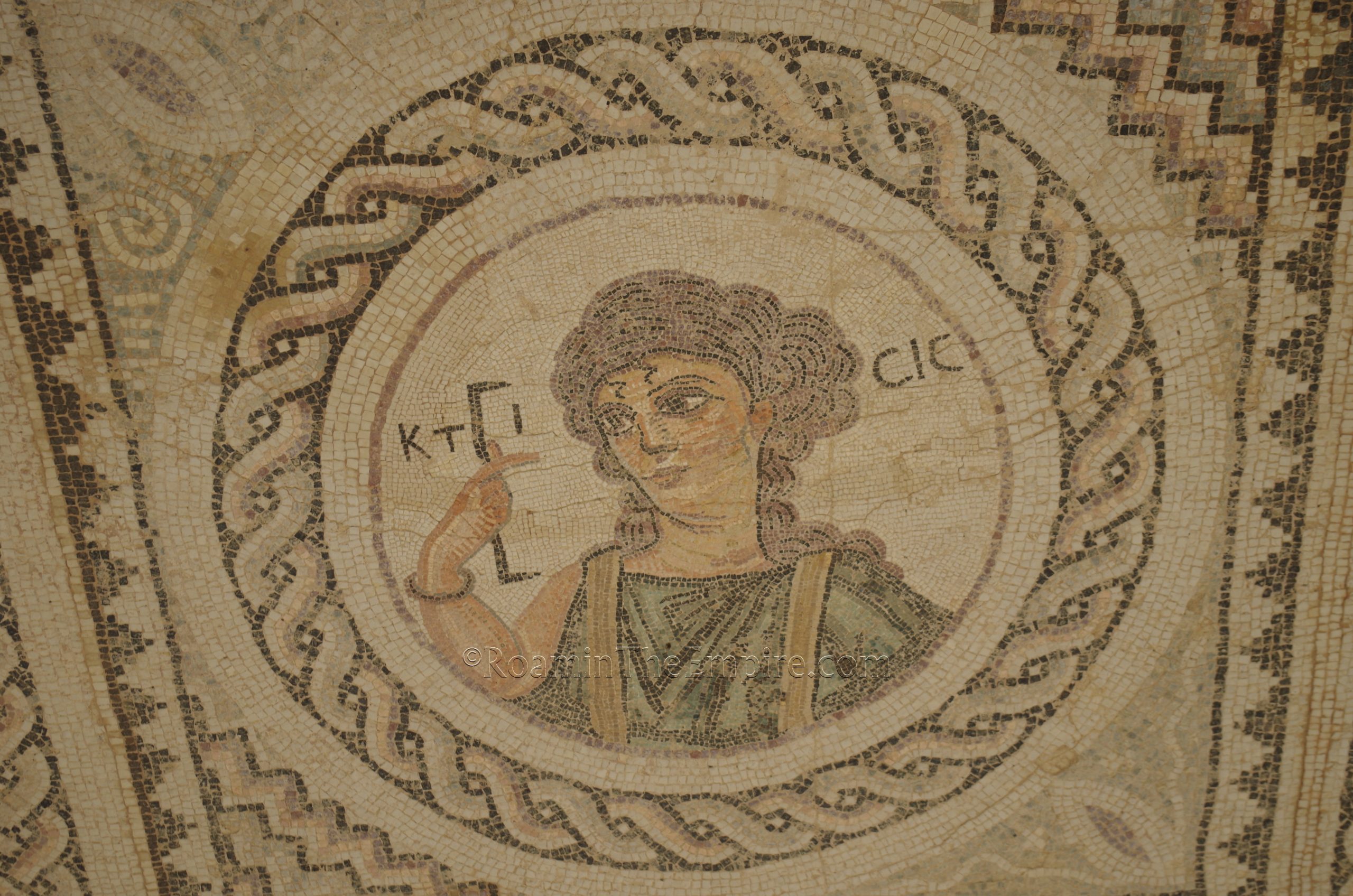
There’s not much in the visitor’s center, but it leads on to the House of Eustolios, which is covered by an extensive protective roof. Construction in this area dates back to the earlier phases of the Roman period, with extensive remodeling done in the 3rd and 4th centuries CE, particularly following the 365 CE earthquake. Then in the first half of the 5th century CE, the building took the form that is extant today. It gets its name from one of a number of mosaicked inscriptions which commemorates Eustolios’ contributions in helping to restore the city after the earthquake, specifically noting the building of the baths within this complex and claiming that he would be the patron of Curium as Phobos (Apollo) once had been.
Indeed, this so-called house built on a slope served as a public center of some sort for the returning Christians that would populate the site following the devastating earthquake. Other mosaicked inscriptions and imagery in the lavishly decorated complex alludes to Christianity, which was present before the earthquake, but which seems to have taken on a new prominence in the post-quake rebuilding efforts. A mosaic of Ktisis, the personification of creation, but also associated with foundation, adorns one of the upper rooms, perhaps another symbol of Eustolios’ work in re-establishing the city after its destruction. Remains of the public baths here are also visible, particularly in the extant hypocaust system.
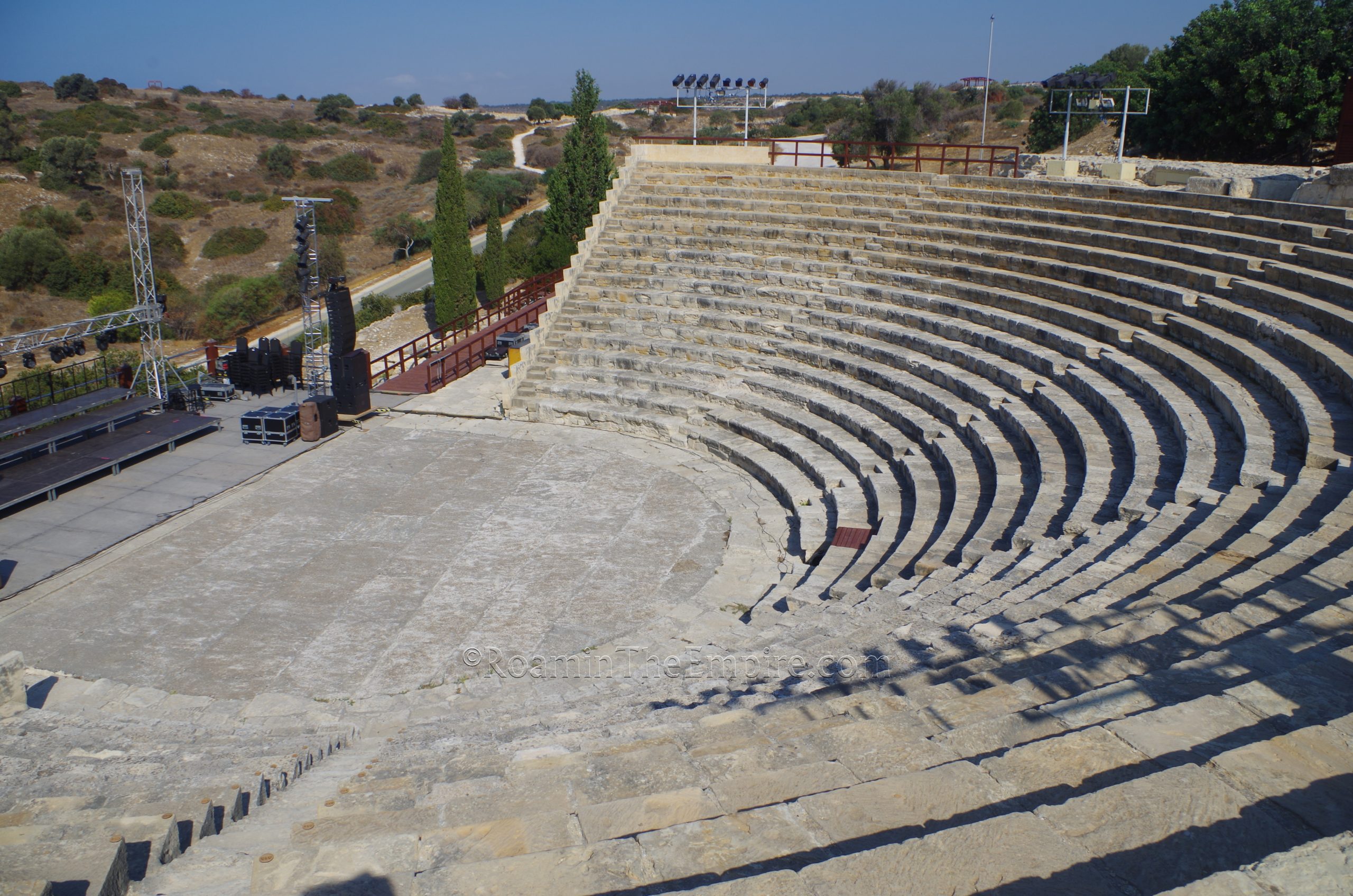
Heading down from the House of Eustolios is the theater of Curium. A Greek style theater was originally constructed here in the late 2nd century BCE, while under the rule of the Ptolemaic dynasty. In the early 1st century CE, alterations were made to the theater, including a seeming reduction in the seating capacity of the structure. An inscription records another renovation to the theater by Julius Cordus during the reign of Nero. Repairs were needed after an earthquake in 77 CE. A late 2nd century CE renovation and reconfiguration of the theater resulted in the form of the theater that is now standing, taking on very distinctly a more Roman style as well as a more prolific use of marble. This possibly occurs under Septimius Severus.
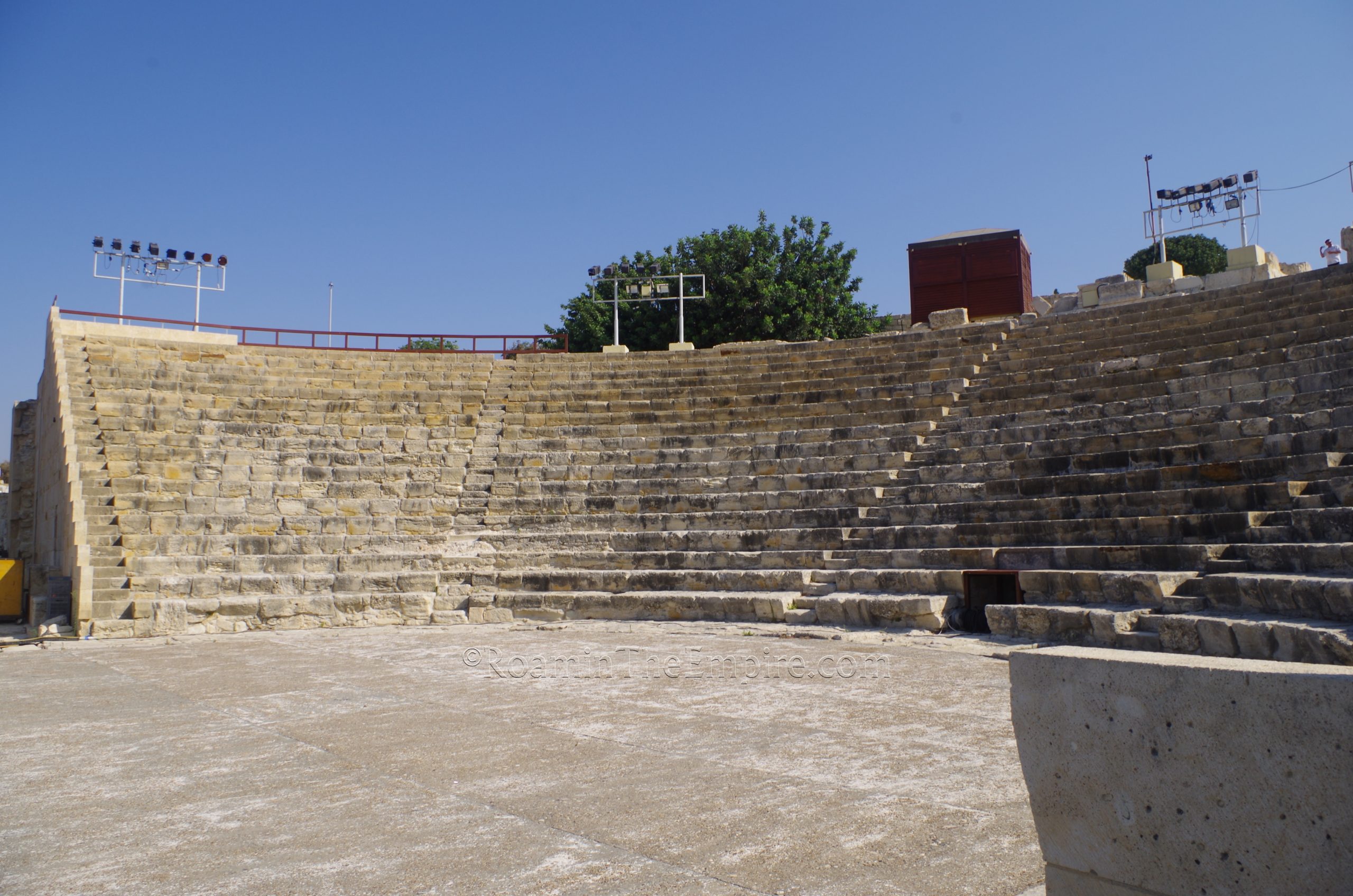
In the 3rd century CE, under Caracalla, the front two to three rows of seating are removed in order to convert the theater into a venue for gladiatorial games. This also included the carving of chambers in the rock beneath the theater for animal housing. In the late 3rd century CE, however, the structural changes were reversed. The theater was heavily damaged in the 365 CE earthquake and was not repaired. Capacity is estimated to have been 3,000-3,500 spectators.
The theater has been pretty extensively reconstructed. It is used for modern performances (one of which was being prepped when I was visiting), so the seating is pretty heavily consolidated to allow people to use it. Most of the area of the theater is accessible aside from the areas immediately adjacent to the stage, due to the modern setup. Presumably this might not be as much of an issue during the offseason when performances are not scheduled here.
Continued In Curium, Cyprus Part II
Sources:
Grant, Michael. A Guide to the Ancient World: A Dictionary of Classical Place Names. New York: Barnes & Noble Books, 1997.
Herodotus. Historia, 5.113.
Smith, William. Dictionary of Greek and Roman Geography. Walton & Murray, 1870.
Soren, David and Jamie James. Kourion: The Search for a Lost Roman City. New York: Anchor Press Doubleday, 1988.
Stillwell, Richard, William L. MacDonald, and Marian Holland. McAllister. The Princeton Encyclopedia of Classical Sites. Princeton, NJ: Princeton U Press, 1976.
Strabo. Geographika, 14.683.


